Marketing has changed. It’s no longer about sending a single message to a few people. Now, businesses must reach customers across many different channels. This is where multichannel marketing comes in. But managing all these channels can be tough. That’s why many businesses use marketing automation tools. One of the best tools for this job is ActiveCampaign. It helps businesses reach customers across various channels and build their brands. Now, let’s dive into how multichannel marketing automation with ActiveCampaign works. This approach allows businesses to engage customers more effectively. Multichannel marketing automation with ActiveCampaign makes it easier to manage campaigns across email, SMS, and more.
What is Multichannel Marketing?
Multichannel marketing means reaching your customers in many different ways. This could include:
• Email
• Social media (like Facebook, Instagram, or Twitter)
• SMS (text messages)
• Website
• Apps
Each channel is important because customers like to contact your brand in different ways. This gives them more choices to reach out. Some might like emails, while others prefer social media. With multichannel marketing, you can reach customers where they are. But managing all these channels by hand can be hard and time-consuming. That’s where marketing automation tools, like ActiveCampaign, come in.
What is Marketing Automation?
Marketing automation is a tool that makes marketing easier. It helps you send messages automatically based on customer actions. For example, if someone signs up for your email list, marketing automation can send them a welcome email right away. You don’t have to do it yourself.
With ActiveCampaign, you can set up these automated messages to send on their own. You can send emails, SMS messages, or even reach customers on social media. This way, you can talk to customers on many channels without having to manually send each message. This saves time and makes your marketing more efficient.
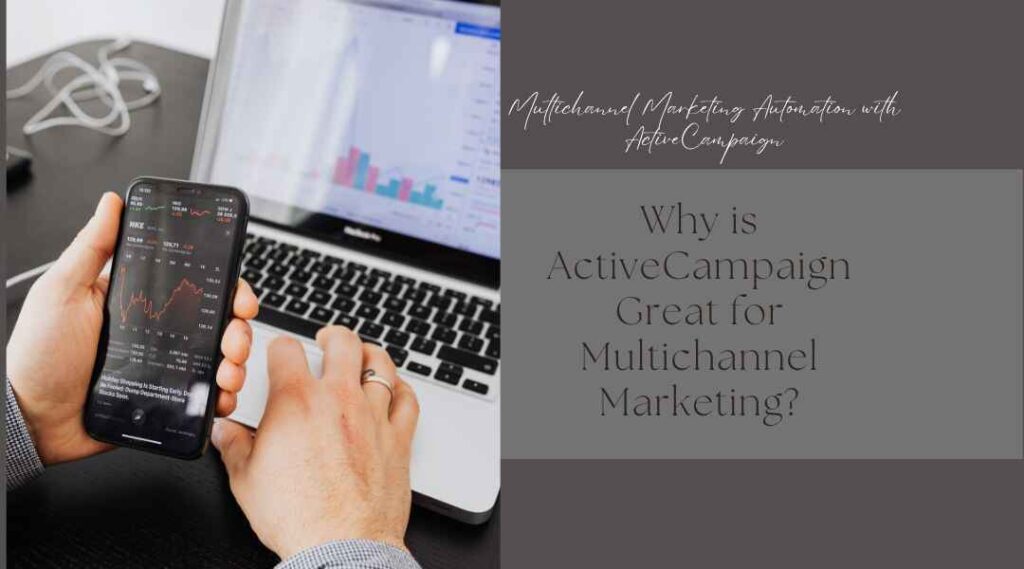
Why is ActiveCampaign Great for Multichannel Marketing?
ActiveCampaign is a popular marketing automation tool. It is known for being easy to use, powerful, and affordable. But what makes it really special is how it works with many different marketing channels. It helps you automate marketing on all channels. This way, you can reach customers no matter where they are. ActiveCampaign has great features for multichannel marketing automation with ActiveCampaign. Let’s go over some of them.
- Email Marketing
Email marketing is still one of the most effective ways to connect with customers. ActiveCampaign lets you create beautiful emails and send them automatically. You can set up email sequences based on customer actions. For example, if someone gets an eBook from your site, you can send them emails. These emails can have more useful content. This happens automatically. - SMS Marketing
Not everyone checks their email often, but many people check their phones regularly. Phones are something people use all the time. ActiveCampaign lets you send SMS (text) messages to your customers. This is a quick way to reach people, especially if you have a time-sensitive offer. You can set up automatic text messages to follow up with customers. They can also remind customers about important events. - Social Media Integration
ActiveCampaign doesn’t just work with email and SMS. It also integrates with social media platforms. You can connect your Facebook and Instagram accounts to ActiveCampaign. This allows you to send targeted ads and messages based on customer behavior. For example, if someone clicks on your ad but doesn’t buy, ActiveCampaign can help. It can send a follow-up message through email or social media. This keeps your brand in their mind. It helps encourage them to make a buy. - Website and App Integration
ActiveCampaign also works with your website and apps. You can track customer actions on your website, like which pages they visit or what products they look at. Based on these actions, you can send them personalized messages. For example, if someone adds a product to their cart but doesn’t buy, ActiveCampaign can help. It can send a reminder email or SMS. This helps encourage them to complete the buy. - CRM (Customer Relationship Management)
ActiveCampaign includes a built-in CRM. This helps you keep track of your customer’s interactions with your brand. You can see all their actions, from website visits to email opens. This allows you to personalize your messages and create better-targeted campaigns.
By having all this information in one place, you can create a more tailored experience for your customers. You will know exactly what they like and what they need. This helps increase sales and build stronger customer relationships.
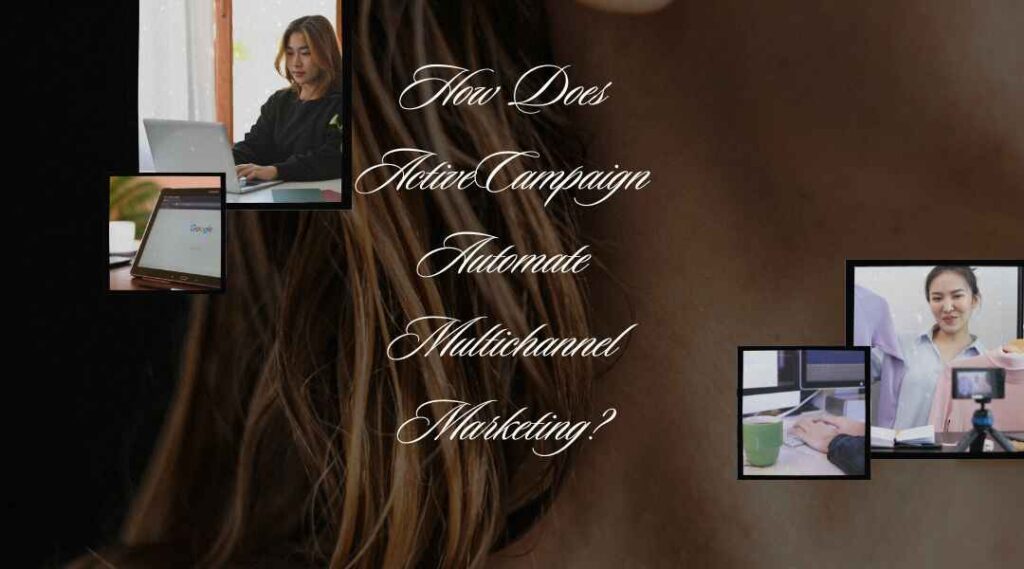
How Does ActiveCampaign Automate Multichannel Marketing?
Now we know what multichannel marketing is and why ActiveCampaign is useful. Let’s see how the tool helps automate everything. It makes the process easy and fast.
ActiveCampaign uses automation to send messages on different channels automatically. These workflows work like “recipes” that tell the system what to do. They are triggered by certain actions. For example, you might want to send an email after someone subscribes to your newsletter. Or, you might want to send a text message when someone abandons their shopping cart. This is the power of multichannel marketing automation with ActiveCampaign.
1. Automation Triggers
Triggers are actions that start an automation. In ActiveCampaign, triggers can be things like opening an email or clicking a link. These actions start the automation. . These triggers set off the workflow and send messages to your customers.
Here are a few examples of triggers you can use:
- Email Opens: If someone opens an email, you can send a follow-up email. You can also offer them a special deal.
- Website Visits: If someone visits your product page, you can send them an email. The email can include more details about the product.
- Cart Abandonment: If someone adds items to their cart but doesn’t buy, you can remind them. You can send a reminder by email or SMS.
- Social Media Interactions: If someone likes your post or clicks your ad, you can follow up. You can send them a special offer.
By using these triggers, you can automate real-time communication with customers. This connects with them across multiple channels.
2. Automation Actions
Once a trigger happens, the automation sends an action. Actions are the tasks ActiveCampaign carries out for you automatically. These tasks could be sending an email, creating a task for your sales team, or posting on social media. They help keep things organized and automated.
Here are some common actions you can set up in your automation workflows:
- Send Emails: The most common action is sending an email. ActiveCampaign lets you create email templates and send them automatically based on triggers.
- Send SMS: You can also send SMS messages automatically. This is especially helpful for time-sensitive offers or promotions.
- Update CRM: ActiveCampaign’s CRM can update itself based on customer actions. For example, if someone clicks on a link in your email, their contact record in the CRM is updated automatically.
- Assign Tasks: If you have a sales team, you can assign tasks to your team members when certain actions happen. This helps your team follow up with leads quickly.
- Post on Social Media: ActiveCampaign can also help you post on your social media accounts. You can set up a schedule to automatically share posts or updates with your followers.
3. Personalization in Automation
One of the most powerful features of ActiveCampaign is its ability to personalize messages. Personalization makes your messages more relevant and engaging. For example, you can use a customer’s name in an email subject line, or recommend products based on what they have viewed on your website.
ActiveCampaign uses customer data to personalize messages. This data can come from different sources, such as:
- The pages they visit on your website
- The emails they open and click
- Their purchase history
- Social media interactions
Using this data, ActiveCampaign can send personalized messages automatically. For example, if someone frequently buys shoes from your store, you can send them an email with shoe recommendations. Or, if they’ve been interested in a particular product, you can send a follow-up email with more details or an offer.
4. Testing and Optimizing Campaigns
ActiveCampaign also helps you test and optimize your multichannel marketing campaigns. You can test different subject lines, email designs, or even sending times. This is called A/B testing. It helps you find out what works best for your audience.
Once you test and improve your campaigns, ActiveCampaign can send the best emails automatically. It will send the messages that perform the best. This helps you get the best results from your marketing efforts.
Benefits of Multichannel Marketing with ActiveCampaign
Using ActiveCampaign for multichannel marketing brings many benefits to businesses. Let’s take a look at some of the biggest advantages:
1. Saves Time
With automation, you don’t have to send emails, SMS messages, or social media posts manually. ActiveCampaign does it all for you. This saves a lot of time, especially for businesses that are sending messages to large groups of customers.
2. Better Customer Engagement
By using multiple channels, you can engage your customers where they are. Some customers prefer email, while others prefer text messages or social media. By reaching them across different platforms, you can increase the chances of your message being seen.
3. Increased Sales
Personalized and timely messages are more likely to lead to sales. For example, sending a reminder email or SMS about a cart can help customers finish their purchase. ActiveCampaign sends these messages at the best time. This helps you get more sales. It makes sure you reach customers when they’re ready to buy.
4. Improved Customer Experience
When customers receive messages that are relevant to them, they feel valued. By using automation, you can send the right message at the right time. This makes your marketing more personal and customer-centric, leading to better customer relationships.
5. Better Tracking and Reporting
ActiveCampaign gives you detailed reports on how your campaigns are performing. You can see which messages are working and which ones need improvement. This helps you make data-driven decisions and optimize your marketing strategies.

How to Set Up Multichannel Marketing with ActiveCampaign
Multichannel marketing automation with ActiveCampaign can help your business grow. Now, let’s look at how to set it up easily. Setting up automation may sound complicated, but ActiveCampaign makes it simple. Here’s a step-by-step guide on how to get started:
Step 1: Create an ActiveCampaign Account
The first thing you need to do is create an account with ActiveCampaign. Visit the ActiveCampaign website, sign up, and follow the instructions to set up your account. You’ll be asked to enter basic details about your business, such as:
- Your company name
- Email address
- Website URL
- Your goals for using ActiveCampaign
Once you’ve completed these steps, you can begin exploring all the features ActiveCampaign offers.
Step 2: Integrate Your Channels
The next step is to connect the channels you want to use. ActiveCampaign works with several platforms to help you reach customers in the most effective ways. Here’s how you can integrate each channel:
- Set Up Your Email Lists: Before you can send emails, you need to create email lists. These lists help you group your subscribers based on different factors. You can organize them by interests, behavior, or purchase history. For example, you might create one list for buyers and another for non-buyers. This makes it easier to send the right messages to the right people.
- Design Your Emails: ActiveCampaign has a simple email builder to help you design professional emails. It’s easy to use and creates great results. You can choose from pre-designed templates or build your own from scratch.
- Set Up Triggers and Actions: After setting up your email lists, create automated email campaigns. These campaigns help you send emails without manual work. For example, you can send a welcome email automatically when someone subscribes. This makes it easy to engage with new subscribers right away.
SMS
- Connect Your Phone Number: ActiveCampaign allows you to send SMS messages, but you need to connect your business phone number first. You can do this by following the instructions in the ActiveCampaign dashboard.
- Create SMS Campaigns: After your phone number is set up, you can start creating SMS campaigns. You can set triggers to send automatic text messages, just like with email. For example, when a cart is abandoned or a product is purchased. This helps engage customers at the right moment.
Social Media
- Connect Your Social Media Accounts: To send automated messages on platforms like Facebook or Instagram, you need to connect your accounts to ActiveCampaign. This integration helps you run targeted ads and post relevant content automatically.
- Create Social Media Campaigns: After linking your accounts, you can use ActiveCampaign’s automation tools. These tools let you send messages or ads based on customer actions. This helps you connect with customers at the right moment.
Website and Apps
- Install ActiveCampaign’s Tracking Code: Install the ActiveCampaign tracking code on your website to check customer activity. This helps you understand what visitors do on your site.
- This helps you see what pages visitors are looking at and how they interact with your site.
- Set Up Web-Based Automation: ActiveCampaign lets you take action based on website visits. If someone views a product page, you can send them an email or text automatically. This helps you share more details about the product they are interested in. It’s a great way to keep customers engaged and boost sales.
Step 3: Create Automated Workflows
Now that you have all your channels set up, you can start creating automated workflows. Workflows are the heart of your multichannel marketing strategy. These workflows let you set the rules for when and how messages are sent to your customers.
Example of an Automated Workflow:
- Trigger: A customer subscribes to your email list.
- Action 1: Send a welcome email with a discount code.
- Action 2: Wait for 2 days and send a reminder SMS about the discount.
- Action 3: If a customer clicks on the discount link, send them a follow-up email. Include a product recommendation based on their interest.
- Action 4: If the customer buys the product, send a thank-you email and offer a coupon for their next buy.
This is just one example of how automation can help you send personalized messages across many channels.
Step 4: Use Customer Data to Personalize Messages
Personalization is key to making your multichannel marketing efforts successful. ActiveCampaign allows you to use customer data to personalize your messages. Here’s how:
- Name Personalization: Use your customers’ first names in emails and SMS to make them feel special.
- Behavioral Data: Use data like past purchases, website visits, and email opens to send relevant content.
- Location-Based Data: If you have a shop or special deals for certain areas, you can send messages to customers nearby. Use location data to reach the right people with the right offers. This helps you attract more local customers and grow your business.
Step 5: Test and Optimize Your Campaigns
ActiveCampaign also lets you test and optimize your campaigns. You can perform A/B testing to see which emails, SMS messages, or social media ads work best. For example, you could test two different subject lines in your email campaigns to see which one gets more opens.
By using testing and analytics, you can make your campaigns more effective over time. ActiveCampaign gives you clear reports on your campaign performance. This helps you understand how well your campaigns are doing. You can use this information to improve future campaigns.
Step 6: Monitor and Adjust
Once your workflows are running, it’s important to check their performance. ActiveCampaign provides a dashboard that shows you how your campaigns are doing. You can see important metrics like:
- Open rates
- Click-through rates
- Conversion rates
- Customer engagement
By reviewing these metrics regularly, you can see what’s working and what’s not. This allows you to make adjustments to improve your campaigns and get the best results.
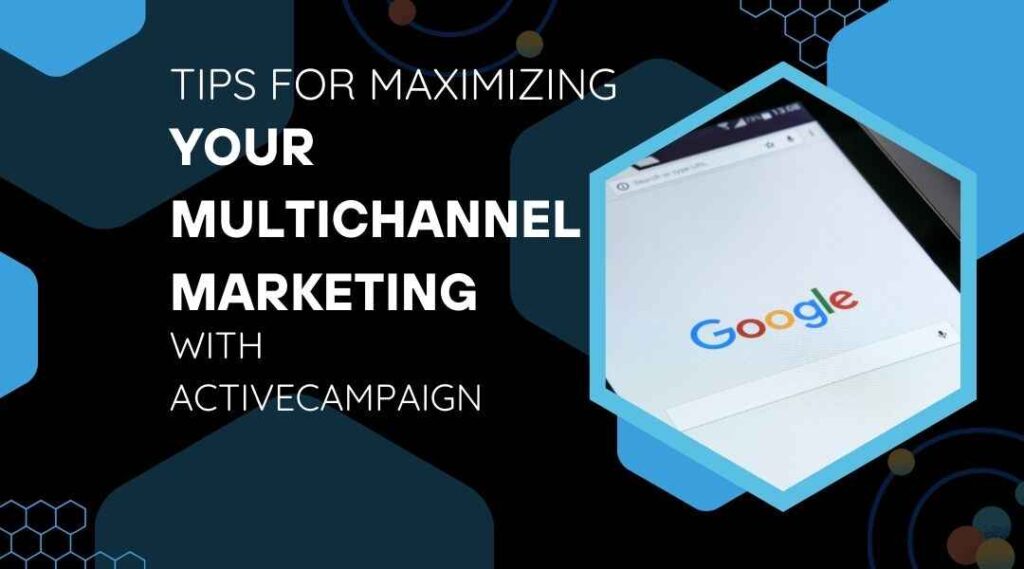
Tips for Maximizing Your Multichannel Marketing with ActiveCampaign
Using ActiveCampaign for multichannel marketing automation with ActiveCampaign is a great way to engage customers. To get the best results, there are some best practices to follow. These strategies will help you use the tool more effectively. By applying them, you can maximize your marketing success. Below are some tips to help you maximize your marketing success:
1. Focus on Customer Segmentation
One of the key benefits of ActiveCampaign is its ability to segment your audience. Segmentation is the process of grouping customers with similar characteristics. This could include interests, buy history, or behavior. It helps you target your marketing efforts more effectively. This allows you to send the right message to the right person at the right time. For example:
- New Subscribers: Send them a welcome email series to introduce your brand.
- Frequent Shoppers: Offer loyalty rewards or exclusive deals.
- Abandoned Cart Visitors: Send reminders and incentives to complete their buy.
Targeting specific segments makes your messages more relevant. This increases the chances of conversion.
2. Use Triggered Automations Wisely
Automation is incredibly powerful, but it’s important to set it up in a way that feels personal, not robotic. Avoid overloading your customers with too many automated messages. Instead, use triggers strategically to send relevant content at the right moments. For example:
- Post-Purchase Emails: Send a thank-you email after a customer makes a buy. Include product recommendations based on what they bought.
- Event Reminders: If you’re hosting a webinar or promotion, schedule an automated reminder email. You can also send an SMS a day before the event. This helps ensure attendees don’t forget.
Using triggers wisely helps you engage your audience without overwhelming them.
3. Be Mindful of Timing
Timing is everything when it comes to marketing automation. Sending a message at the wrong time can mean it gets ignored or lost in the noise. ActiveCampaign allows you to schedule emails, SMS messages, and social media posts. This helps you reach your audience at the right time. It ensures better engagement and response rates. You can experiment with different send times to see when your customers are most active.
For example:
- Emails: Studies show that emails sent on Tuesdays or Thursdays tend to have higher open rates.
- SMS: Text messages have high open rates. But, it’s best to send them during business hours. This way, you won’t disturb customers at night.
By adjusting your send times, you increase the chances that your message will be seen and acted upon.
4. Maintain a Consistent Brand Voice Across Channels
When using multichannel marketing, make sure your message sounds the same everywhere. Keep your tone and style consistent across all platforms. This helps your audience recognize your brand easily. This helps build brand recognition and trust. Whether it’s through email, SMS, or social media, your tone should be aligned with your brand’s personality.
For example, if your brand is fun and informal, make sure your emails and SMS messages reflect that tone. If your brand is more professional, adjust your language to match. ActiveCampaign lets you create templates to use across various channels, keeping everything consistent. This makes it easy to maintain a unified look and feel in your messaging.
5. Analyze Performance and Adjust
Multichannel marketing automation is an ongoing process. Once your workflows are running, it’s essential to analyze how they are performing. ActiveCampaign provides detailed reports and analytics to help you track:
- Open rates
- Click-through rates
- Conversion rates
- Engagement levels
By analyzing this data, you can see which messages are working and which need improvement. Use A/B testing to experiment with different versions of your emails, SMS, and ads. For example, you can try different subject lines in your emails. You could also send a text message with a discount code. This helps you see what works best for increasing sales.
Keep track of your campaigns and make improvements regularly. This helps you achieve better results over time.
6. Integrate with Other Tools
ActiveCampaign works with many other tools to enhance your marketing across different channels. It connects seamlessly with various platforms to strengthen your multichannel marketing strategy. You can connect ActiveCampaign with:
- CRM systems: For deeper customer insights.
- E-commerce platforms: Like Shopify and WooCommerce, it helps track purchases. This allows you to create more personalized marketing campaigns.
- Web forms: To capture leads and automate follow-ups.
When you integrate ActiveCampaign with these tools, everything works more smoothly. This makes things easier for both you and your customers. It helps you gather more data, which in turn helps you refine your marketing campaigns.
7. Experiment with Different Channels
Don’t be afraid to experiment with different channels to see what works best for your business. Customers have different preferences for how they want to be contacted. Using multiple channels like SMS, email, and social media can help reach more people. If you’re unsure which channel works best, try using a mix of them. Track the results to see which channels are most effective. This approach helps you understand your audience better. It allows you to focus on the channels that drive the best results.
8. Stay Consistent and Engage Regularly
Consistency is key in multichannel marketing. ActiveCampaign does a lot of the work for you, but you still need to keep your message consistent. Make sure to stay in touch with your audience regularly. Whether it’s through email, text, or social media, reaching out is important. Staying connected with your audience helps keep your brand on their minds. Consistent communication is key to keeping your audience engaged. Regularly reaching out ensures your audience remains connected to your brand.
Build a content calendar to schedule your campaigns and keep your channels active. Use a content calendar to plan your campaigns. This helps you stay active on all platforms consistently. Consistent communication helps keep your brand top-of-mind for your customers.
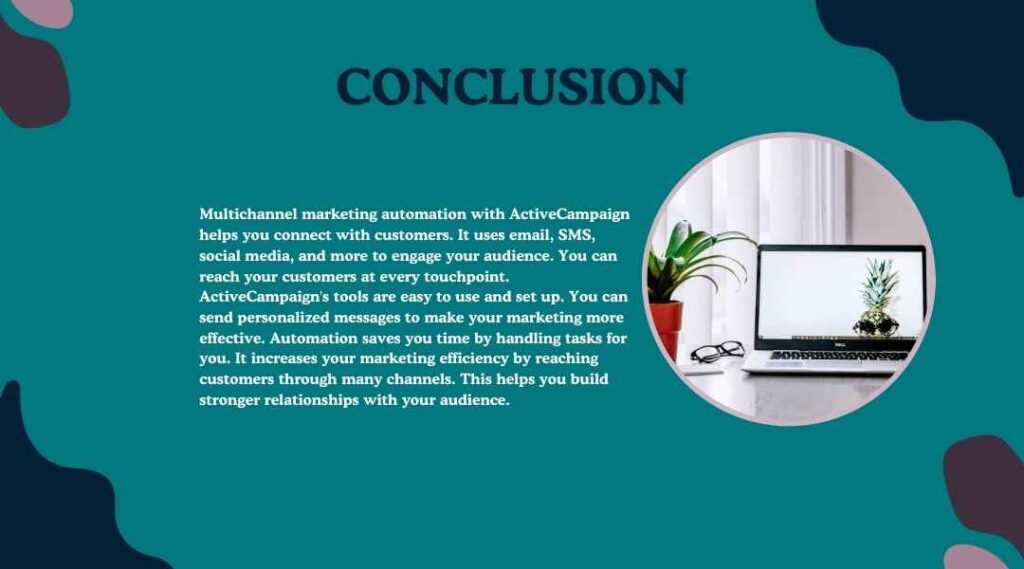
Conclusion
Multichannel marketing automation with ActiveCampaign helps you connect with customers. It uses email, SMS, social media, and more to engage your audience. You can reach your customers at every touchpoint. ActiveCampaign’s tools are easy to use and set up. You can send personalized messages to make your marketing more effective. Automation saves you time by handling tasks for you. It increases your marketing efficiency by reaching customers through many channels. This helps you build stronger relationships with your audience.
Follow the steps in this blog to set up your multichannel marketing strategy. Whether you’re a beginner or an experienced marketer, these tips will help. ActiveCampaign offers all the tools needed for success. It helps you grow your business effectively. You’ll be able to improve customer engagement easily. These strategies will take your marketing to the next level.
Ready to take your marketing to the next level? Start using ActiveCampaign today and unlock the full potential of multichannel marketing automation.
Frequently Asked Questions (FAQ) About Multichannel Marketing Automation with ActiveCampaign
1. What is multichannel marketing?
Multichannel marketing helps businesses connect with customers in many ways. It uses email, SMS, social media, websites, and apps. Businesses can reach people where they feel most comfortable. Customers receive messages through their preferred channels. This makes communication more effective and personal. It helps businesses build better relationships with their audience.
2. How does marketing automation work in ActiveCampaign?
ActiveCampaign automates your marketing tasks easily. It can send emails, SMS, and social media posts automatically. Messages are triggered by customer actions, like subscribing. You can set up follow-ups without manual work. This saves time and keeps customers engaged. It helps you connect with your audience more effectively.
3. What channels can I use with ActiveCampaign?
ActiveCampaign allows you to reach customers through several channels, including:
- SMS (text messages)
- Social Media (Facebook, Instagram, etc.)
- Your Website (through tracking and automated messages)
- Apps (for integration with third-party apps)
4. Can I use ActiveCampaign to send personalized messages?
Yes!ActiveCampaign helps you personalize marketing messages. You can use customer data like name, behavior, and buy history. This makes your messages more relevant and effective. This makes your messages more relevant and increases the chances of customer engagement.
5. What is a trigger in ActiveCampaign?
A trigger is an action that starts an automation in ActiveCampaign. For example, when a customer subscribes to your email list, that action can trigger an automated welcome email. Triggers help you send messages at the right time based on customer actions.
6. Can I test my campaigns in ActiveCampaign?
Yes! ActiveCampaign offers A/B testing for better marketing results. You can test different emails, SMS, or social media posts. It helps you find the best subject lines, images, and timing. This improves engagement and boosts your campaign success.
7. How do I integrate ActiveCampaign with my e-commerce platform?
ActiveCampaign integrates with many popular e-commerce platforms, such as Shopify and WooCommerce. You can track customer purchases easily. It helps you create targeted marketing campaigns. You can send personalized follow-up messages based on shopping behavior.
8. How do I track the performance of my multichannel campaigns?
ActiveCampaign provides detailed analytics and reports that track the performance of your campaigns. You can track important metrics like open and click rates. It helps you see how well your campaigns are performing. You can measure conversions and customer engagement easily. This allows you to make smart, data-driven decisions.
9. How can I segment my audience in ActiveCampaign?
ActiveCampaign helps you organize your audience into different groups. You can segment them by location, behavior, interests, or purchases. This lets you send personalized and relevant messages. Targeted messages make your marketing more effective. It increases the chances of turning leads into customers. This helps grow your business with better engagement.
10. Is ActiveCampaign suitable for small businesses?
Yes! ActiveCampaign is easy to use and budget-friendly for all businesses. It works well for small businesses looking to grow. The platform offers powerful automation tools to save time. It includes a customer relationship management (CRM) system. mYou can market your business across many channels. This helps small businesses succeed without a big marketing team.
11. How do I get started with ActiveCampaign?
To get started with ActiveCampaign, simply sign up for an account on their website. After setting up your account, you can integrate your email, SMS, social media, and website. You can set up automated workflows to send messages. These messages go out across different channels automatically.
12. Can ActiveCampaign help with lead generation?
ActiveCampaign helps you generate leads with its powerful tools. You can create signup forms for your website to collect leads. It allows you to set up automated follow-ups with potential customers. You can send personalized emails based on user actions. The platform helps you organize and segment your audience easily. This makes it simple to connect with the right people at the right time.



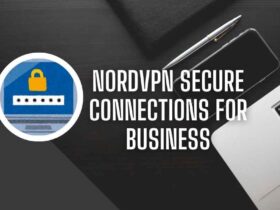
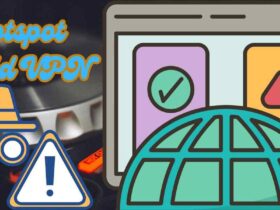

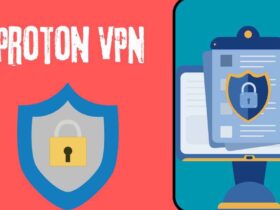

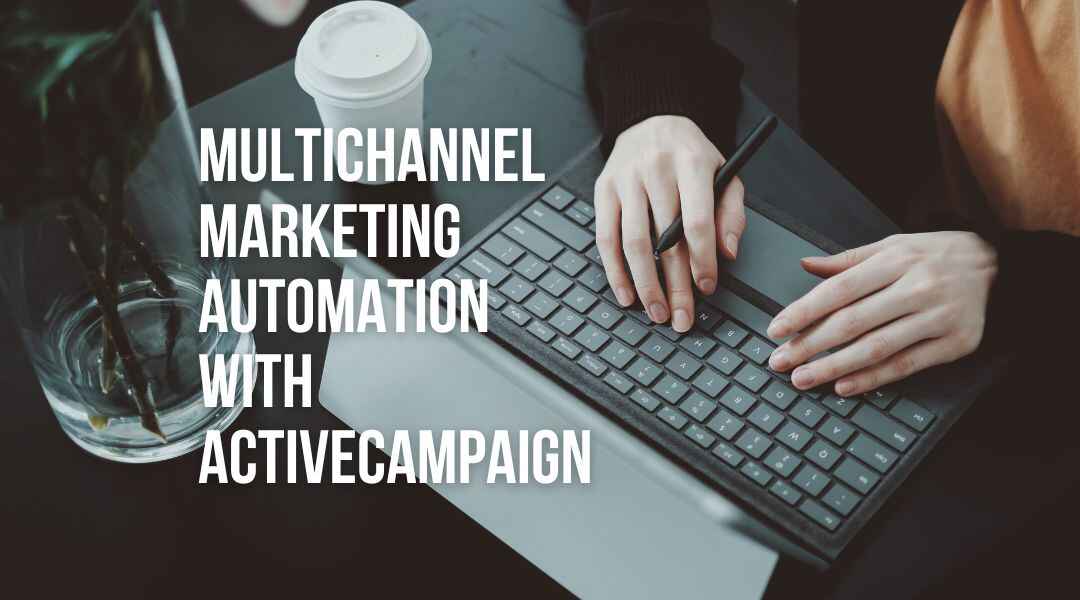
Leave a Reply